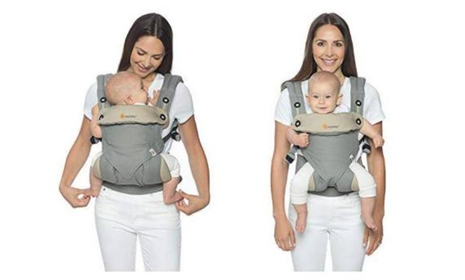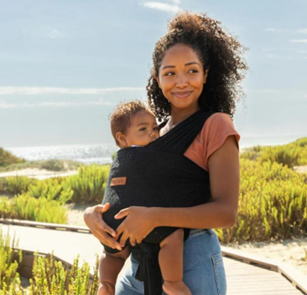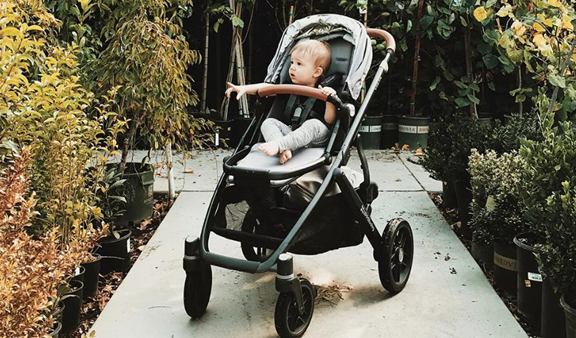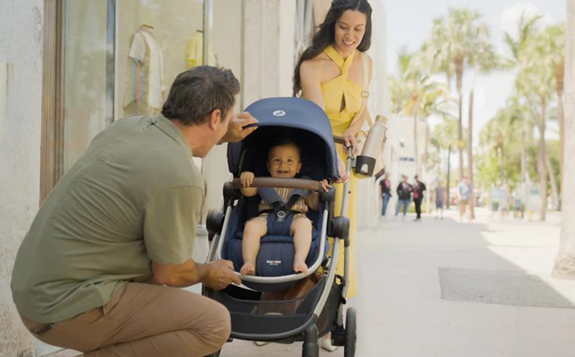Every parent wants the best for their child, and that includes ensuring their safety and comfort in all situations. Baby carriers have become an essential accessory for parents who want to keep their babies close while going about their daily activities. But, “Are baby carriers safe?” This question looms large for many caregivers. Understanding baby carrier safety, how to choose the right one, the risks of improper usage, and learning how to use them correctly can offer peace of mind. Let’s explore these aspects to ensure your baby’s safety in a carrier.
Understanding Baby Carrier Safety
What makes a baby carrier safe?
Safety is the priority when it comes to baby carriers. A safe baby carrier supports the baby’s head, neck, and spine correctly, ensuring proper alignment and comfort. It should have sturdy, adjustable straps that securely fit around the parent’s body, providing stability and reducing strain. The materials used should be non-toxic, breathable, and soft, ensuring comfort and preventing overheating. Choosing a carrier with these features ensures both the baby and the parent have a safe, comfortable experience. Always prioritize safety when selecting a baby carrier to guarantee peace of mind.
Key features of a safe baby carrier
Several key features define a safe baby carrier. First, ensure it provides proper support, especially for newborns, by securing the baby’s head, neck, and spine. The fastenings, including buckles and straps, should be secure yet easy to operate, ensuring the baby stays safely in place. Comfortable, soft, and durable fabrics are essential, as they protect the baby’s sensitive skin while offering breathability. Finally, an ergonomic design is crucial to evenly distribute the baby’s weight, reducing strain on the parent’s back and shoulders. Prioritize these features to ensure a safe and comfortable experience for both parent and baby.
How to Choose a Safe Baby Carrier
Choosing the right carrier for your baby
When choosing a baby carrier, consider your baby’s age, size, and developmental stage. Newborns typically require carriers with extra head and neck support to ensure safety and comfort. For older babies, choose a carrier that accommodates their growing bodies, offering proper posture and support. It's always a good idea to try carriers on before buying them, as this allows you to find one that fits both you and your baby comfortably. This will help ensure you select the right option for long-lasting comfort and support.
What to look for in a baby carrier design
The design of a baby carrier plays a vital role in ensuring both safety and comfort. Look for carriers with adjustable straps, which provide a secure fit for various body types. Opt for a hip-friendly design, especially those endorsed by the International Hip Dysplasia Institute, to ensure your baby’s legs are positioned in the “M” shape for optimal hip development. Breathable fabric is another key feature, keeping your baby cool and minimizing the risk of overheating. Additionally, carriers with removable, machine-washable parts offer added convenience for easy maintenance and hygiene.
What Are the Risks of Improper Babywearing?
Common mistakes to avoid when babywearing
Improper babywearing can pose serious risks, including suffocation, hip dysplasia, and falls. Carrying the baby too low or loose may obstruct their breathing, while using carriers with broken fastenings or compromised integrity can lead to accidents. Always ensure the carrier is properly fitted, secure, and in good condition for the baby's safety.
How to prevent discomfort and injury for your baby
Ensure the baby’s chin is off their chest to keep airways open and prevent suffocation. The baby’s legs should be in a spread-squat position to support healthy hip development and proper posture. Regularly check the carrier’s condition, ensuring all straps are secure and no fabric is worn, to prevent any wear and tear that could compromise safety.
How to Use a Baby Carrier Safely
Step-by-step guide to using a baby carrier
Read Instructions: Start by familiarizing yourself with the carrier manual for proper use.
Position Carrier: Put on the carrier as per the instructions for an optimal fit.
Place Baby: Gently place your baby in the carrier, ensuring their comfort and safety.
Adjust Straps: Tighten the straps to secure the carrier comfortably around you and your baby.
Safety Check: Make sure your baby's face is visible, and they're close enough for you to kiss.
Ensuring proper baby positioning
Upright: Babies should be carried upright, facing the parent, especially newborns.
Head Support: Ensure the baby’s head and neck are supported until they can hold their head up.
Legs: The baby’s legs should form an ‘M’ shape, with their knees higher than their bottom for proper hip alignment.
Airway: Always ensure the baby’s face is visible and their airways are clear, preventing obstruction or suffocation.
These key points ensure safe and comfortable babywearing, promoting healthy development and bonding.

Conclusion
Ensuring your baby’s safety and comfort in a carrier involves selecting the right product, understanding proper usage, and avoiding common mistakes. Are baby carriers safe? By being mindful of the key features and guidelines provided, parents can enjoy the benefits of babywearing while keeping their little ones safe. Stay attentive to your baby’s needs and regularly check the carrier for wear and tear to maintain its safety.
FAQ
How long can a baby stay in a carrier?
Babies should not stay in carriers for extended periods. A general guideline is no more than two hours at a time to avoid strain on their developing bodies.
Are front-facing carriers safe for babies?
Front-facing carriers can be safe if used correctly and if the baby has good head control, usually around six months. Always follow the carrier’s guidelines for age and weight.
What should I do if my baby falls asleep in the carrier?
If your baby falls asleep in the carrier, make sure their head remains supported, airways are open, and their position is comfortable. A carrier designed for safe napping can help maintain proper alignment.




